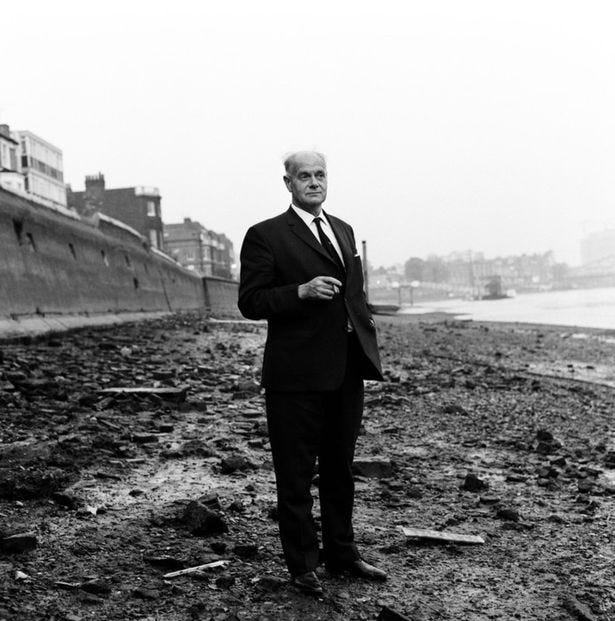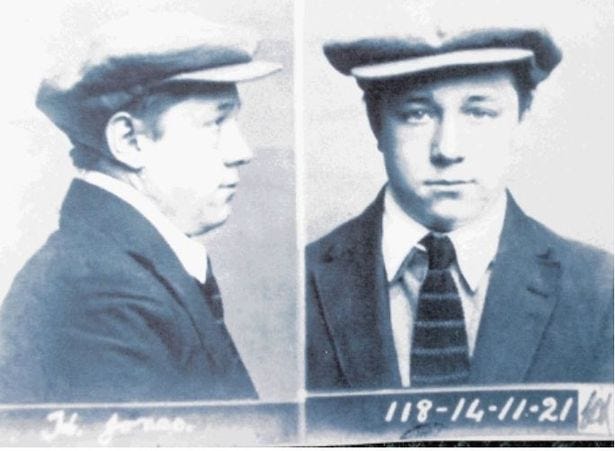The continuing cold case review of the Hammersmith Nude Murders 1959–1965. In this article, we look at the overall investigation of the serial killer who got away.

Famous Scotland Yard detective John Du Rose was selected to lead the investigation into the Hammersmith Nude Murders due to his reputation for solving major crimes quickly. John Du Rose had the nickname “Five day John” as he could apparently solve murders in just five days, unfortunately, on this occasion, he failed completely.
The detectives found the killer's lock-up where he was believed to have stored bodies and the paint-spraying industrial unit where he worked but did not find the killer or identify where the murders occurred.
The Metropolitan Police specialist detectives led by John Du Rose were never able to understand what caused the killer to commit his heinous crimes and why they abruptly stopped.

As discussed in my previous blog on this case, cold case investigator, Jarad Adams is of the opinion that despite the passage of time this case can still be solved and the 1960s killer, who the press named “Jack the Stripper” can still be identified.
You can read part one of this story by clicking the link below:
Jack The Stripper
The Hammersmith Nude Murderslolly-truecrime.medium.com
The original investigations were obviously not handled well and even allowing that investigative abilities and equipment have moved on in leaps and bounds since the 1960s, things could have been handled much more professionally. Sadly as is the case with many murders involving prostitutes and sex workers the police seem to just take a half-hearted approach because of the manner in which the women made their living.
Suspects in the case
Let's start with the strange and unexplained seemingly false confession of Kenneth Archibold, who walked into Notting Hill Police Station in April 1964 and offered a confession for the murder of Irene Lockwood.
Archibold seemed dead set on making the confession and at first convinced the police that they had a suspect, but things turned sour when the police began to look closely at the story.
There was literally no evidence to indicate that Archibold had been even close to the scenes of any of the murders, including that of Irene Lockwood. On facing trial in June 1964, he clearly was not familiar with the locations where Lockwood and others were discovered and as a result, the jury found him not guilty. It turns out that Kenneth Archibold was not of full mental capacity when he made his confession statements to the police.
It is not quite clear why anyone, even of limited mental capacity would choose to confess to such heinous crimes, but there do seem to be other crimes where this has happened. Unfortunately in some cases, the confession is accepted and the person is convicted.
The case of Raymond Gilbert comes to mind. Gilbert was convicted after a foolish false confession under duress of killing bookmaker, John Suffield in 1981 and served 36 years for a crime he did not commit.
I know that Jarad Adams is compiling an article on the Gilbert case so I will not write any further on that here.
Freddie Mills
Mills was a boxing champion who had become embroiled in the world of organised crime, it was suggested by several 1960s gangsters including the Kray Twins that he was the murderer of all of the prostitutes. Freddie Mills was found dead on 24th July 1965 in his car parked in Goslett Yard behind the nightclub that he owned.
Whilst it was initially suspected that Mills had been murdered, it only took a few days for the police to drop any murder investigation and the coroner’s court ruled death by suicide. Interestingly the murders stopped after Freddie died.
There is arguable evidence to say that Freddie Mills could not have been “Jack the Stripper” as he was 5ft 11 inches tall and police forensics claimed that they believed the killer to be a short person. He was a middleweight boxer with an element of local fame, so if he had been moving around the streets of London during the small hours of the morning he would have been spotted by local patrol officers.
As mentioned in my previous blog it was suggested by police that there was evidence of paint spray being found on some of the bodies, again Mills had no connection to any such work.
Mungo Ireland
Mungo was one of the Metropolitan Police’s, most likely suspects and may even have been at least part of the reason why they decided to turn the case cold and stand down the investigation team.
Mungo Ireland was a security guard at the Heron Trading Estate and therefore had access to the killer’s lock-up and paint store. John Du Rose the SIO of the case said in a 1970s interview that he could only identify the killer as a married family man. Mungo was married with a family and seemingly aware that police had him under surveillance and probably assumed that he was ultimately going to be arrested.
He left a note for his wife saying that he couldn’t stick it any longer and then committed suicide by putting a pipe into his car from the exhaust. Mungo originated from Scotland and according to more recent investigations by journalist Jane Lawrenson of the Chiswick Herald Mungo was in Scotland at the time of some of the murders.
Whilst it may be possible that Ireland was the killer, I am not entirely convinced. Yes he was in the right position to commit the crimes but to be fair he was a night watchman based on an industrial estate, he would have had to leave in order to abduct the victim on each occasion, do the killing without being overheard or observed by other night workers and leave again in order to dump the bodies at the various deposition site.
It is also important to remember that several of the victim's bodies had flecks of industrial paint on them, this would have been deposited when the paint shop was working, would the painters not have noticed a naked, dead woman?

Detective John Du Rose apparently made the announcement that the police were closing in with the hope that Jack the Stripper may just trip up and reveal his identity, sadly this did not happen the killings just abruptly seemed to stop. Did Mungo Ireland’s impromptu death on March 3rd 1965 signal the end of the murders? Was he part of something bigger, forced into suicide? Possible, but I doubt it.
Harold Jones
Lastly in the line of suspects comes, Harold Jones. He seems to have been the most popular suspect in more modern research and investigation.

Harold was released from HMP Wandsworth in 1941 after serving a sentence for the murders of two children, 8-year-old Fredo Burnell and 11-year-old Florence Little.
Jones at the age of just 15 was arrested for the murder of Fredo Burnell by strangulation. He was somehow acquitted due to lack of real evidence and then went on to kill again by luring Florence little into his home and strangling her. He was chased by his own father, caught and handed over to the police.
Harold Jones avoided being hanged for his crimes because he was still a minor and was therefore handed a twenty-year prison sentence instead. Upon his release, he moved to London and got married but regularly visited his parents in Wales and went to the graves of his victims.
Was the visiting of graves for a depraved kind of reason or was he remorseful of his crimes? I am not sure and would not really want to guess. Either way having made a fresh start with his wife he became a father and appeared to live a peaceful, law-abiding life.
So why do we need to consider ex-con, rehabilitated Harold Jones as a serious contender for killing the Hammersmith Nude victims?
The evidence is fairly circumstantial but it does rather stack up against him. Of course, Harold was a convicted killer and his victims had been strangled, in fact, he had slit the throat of his second victim, Florence Little.
Jones worked as a sheet metal worker on the Heron trading estate but I have not been able to find any evidence of his being involved in any spray painting work. I do not see the other evidence offered by others as even bearing value as circumstantial evidence.
Jones lived just four streets from Hannah Tailford and Bridget O’Hara but I do not see this as relevant. If he had lived next door or even on the same street then the evidence may have been admissible. Lastly, the evidence offered is that the killings stopped soon after Jones was diagnosed with bone cancer, but he did not die until 1971.
The link between the Hammersmith Nude Murders and Harold Jones was not established in any way during the 1960s investigations but in fact by a former BBC researcher and author, Neil Minley and his colleague Professor David Wilson in the 2000s, also a TV documentary producer and writer.
I would not like to offer an opinion on a killer here but I do know that six, maybe eight women did not deserve to die because they were prostitutes and did not conform to everyday life. Some of those women had children who had to grow up and live their lives knowing that their mother was killed and no one was ever convicted of the crime.
I know that parents and siblings had to mourn the passing of their family member taken far too early and I believe that the Metropolitan Police failed those women and their families.
This case can be solved, even if the killer is dead he must be identified and it made clear who was responsible.
I would be happy to talk to anyone about this case further so if you have an opinion or indeed anything to add then do get in touch.
I will be back with another really mysterious story very soon, until then please help me to keep bringing you quality, detailed content by making a small donation on my “buy me a coffee” page, I would really appreciate that.
buymeacoffee.com/?via=lollytruecK
You can of course email me:
Follow me on Twitter:
https://twitter.com/LollyTrueCrime
Follow me on Instagram:
https://www.instagram.com/lollytruecrimeworld/?hl=en
Find me on Facebook:
